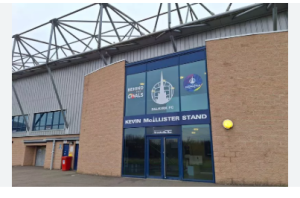
Rams Select a Growing Corner in Their Two-Round Draft Mock.
The Los Angeles Rams are entering a crucial offseason for their Super Bowl aspirations, with General Manager Les Snead having multiple options to explore. This year marks the first time since 2016 that they have a first-round pick in the NFL Draft, offering them flexibility to either retain their No. 19 pick or trade into the draft’s second day. At this point, Los Angeles appears poised to secure quality players in the middle of the first round, although their exact direction remains uncertain. While the defense, particularly the secondary and pass rush, requires more assistance than the offense, there are areas on offense that could benefit from reinforcements as well. The offensive line faces potential losses in free agency, and there’s yet to be a successor identified for quarterback Matthew Stafford.
In a recent two-round mock draft by Chris Trapasso, the Rams prioritize defense while also addressing offensive needs with their top-60 picks. With the 19th overall pick, they select Toledo cornerback Quinyon Mitchell. Trapasso highlights Mitchell’s consistent presence around the football during his collegiate career and envisions him as an immediate contributor as the primary outside corner for the Rams. Mitchell’s rapid rise in draft projections underscores his physicality, explosiveness, and playmaking abilities, which could significantly bolster the Rams’ secondary and mitigate the issue of explosive plays.
Moving to the second round with the 52nd overall pick, the Rams secure Texas’ Ja’Tavion Sanders, a promising tight end prospect. While Head Coach Sean McVay typically favors formations with fewer tight ends, incumbent starter Tyler Higbee’s declining productivity and age suggest the need for fresh talent. Sanders, touted as the second-best tight end in his draft class, offers versatility, excelling in the slot and possessing the skills to gain yards after the catch. While not an immediate necessity for McVay’s offensive scheme, Sanders provides long-term sustainability and the flexibility to adapt schematically when needed.







